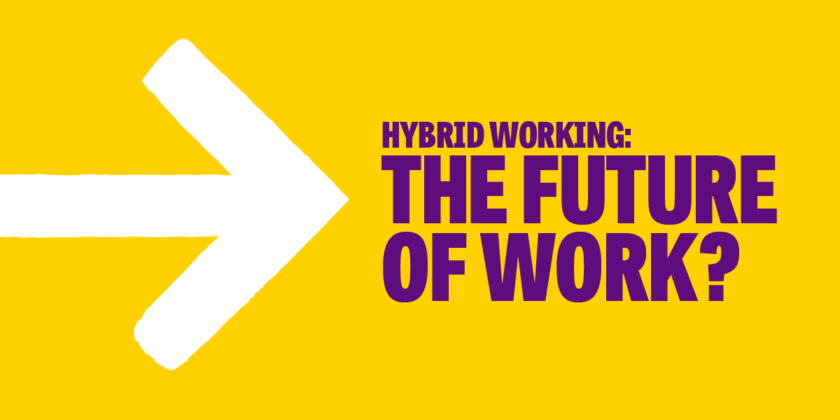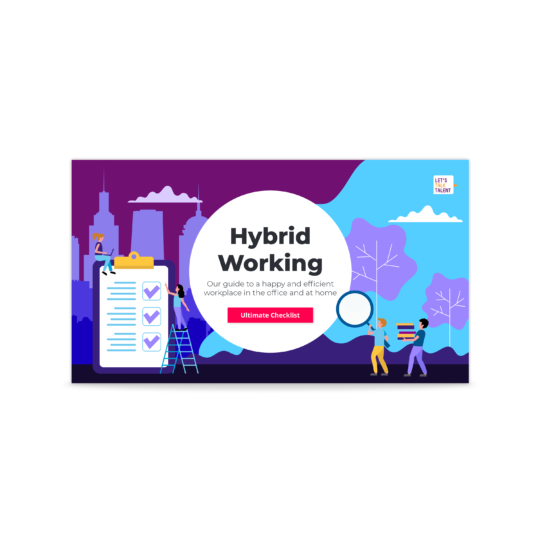Blending both remote and onsite work to best accommodate your unique workforce
Many businesses have mentioned wanting to bring their employees back to the office as soon as possible. Some leaders state that remote working wouldn’t be accommodated in their businesses as it simply does not suit their internal culture. With the world returning to a pre-pandemic state, many of us have been told we have to leave the Zoom calls behind to hop back on the commuter train with our packed lunches. But now that they’ve had time to try out the hybrid reality, is this what employees really want?
Research states that opinions are quite divided. According to the results of a study, nearly 40% just want to go back to the pre-pandemic reality, whilst just under 30% never want to go back to the office at all. The rest are in the middle, hoping for a more flexible solution. The truth is that some of us have thrived working from home, whilst others have hated every minute. And simply going back to the old ways is no longer an option, as it could mean alienating a third of your entire workforce. But if neither end of the spectrum is ideal, what does the future look like for organisations? We’ve got two words for you: employee experience. You’ll have a bit of homework to do, and the only way to do it is to put on a customer lens and review your entire employee lifecycle to ensure it suits both your remote and onsite workers. Finding the right mix of hybrid, remote and onsite for your business can be quite tricky.
The good news? Let’s Talk Talent is here to help. Whether you are a small company or a multinational, size does not matter. It’s up to you to take the lead and generate positive change for your people.
Remote, hybrid or onsite working: what’s the standard?
Before planning your employees’ return, it may be worth establishing the lay of the land. What’s different? The balance of power has shifted. Working from home has allowed people to rediscover what is important to them professionally and personally, and they are ready to make changes accordingly. The power is in your employee’s hands, and the freedom to choose where to work from could determine whether your people see your organisation as a place where they could thrive in the long-term.
Many companies are currently reviewing their ways of working and adopting various flexible measures to both retain and attract great talent. HSBC, for example, has let employees continue to work in a hybrid model, whilst Microsoft has stated that their staff could work from home for approximately 50% of their work week. With those options available in the market, simply reverting to the way things used to be before COVID hit may not be enough to hold on to your people. But whilst the competitive edge that flexibility could give you over other organisations is not negligible, it’s also important to consider another factor in the equation: being human. Change is a process that requires time and adaptation. And when the pandemic hit a while ago, we all had to learn very quickly how to cope with new parameters. Despite what many organisations think, we are still dealing with the fallout. Some employees feel like their feet haven’t touched the ground since, and threading with care, empathy and understanding should be at the heart of everything you do.
Reviewing your current hybrid or remote work model
Those who have chosen a ‘command and control’ model may be feeling the effects already. The argument around employees not being as productive at home simply doesn’t hold, with most of the population functioning efficiently during the lockdown.
In fact, the workday increased. The remote reality has also led to people being empowered to make decisions as managers had to grant their teams more autonomy. With many staff members stepping up to the challenge and showing they can be trusted to keep the business running in times of crisis, businesses had to recognise that the age-old parent-child relationship does need to be replaced in favour of an equal partnership.
Establishing if employees prefer to work from home or at the office
At Let’s Talk Talent, we’re fans of data and metrics. Send out an internal survey to determine your talent pool’s preferences and current state of mind.
Do some market research, compare yourself to your competitors and ask for feedback from your managerial staff. Do people prefer being in the office two days a week? Three? Do they like to have fixed days so they can interact with their team, or do they prefer to pick flexible days based on their availability?
Once you know a bit more about your workforce’s expectations, start preparing a roadmap for implementation of any necessary change. Are you able to offer flexible options? What would a blended world look like for your particular organisation? Can you give staff various options to suit their lifestyles and core values?
Looking at every stage of your employee experience
Once you have a better understanding of your talent pool, you’ll probably end up somewhere in the middle with a blended work environment combining both onsite and remote working. Whichever way of working you choose, make sure you spend time reviewing your employee experience from start to finish with the new hybrid world in mind. Review every single touchpoint, from first contact to the day employees leave, and course-correct where appropriate. Be particularly mindful of inadvertently creating a two-tier system where those working from home feel like they are missing out on key communications. Also, be clear on what you are using the office for, and who will be coming in and when.
Have a look at our top 10 tips for hybrid meetings.
Onboarding new staff remotely
Most staff got to know each other around the watercooler before the pandemic hit. While many have established strong connections with their colleagues, this is a bit harder to do for newcomers either working remotely or only coming to the office once or twice a week. Organisations should take particular care around the onboarding phase of the employee lifecycle.
At Let’s Talk Talent, we use the 5Cs to design exceptional onboarding experiences, even from behind a screen. While there are five principles, we pulled out a couple which should be of particular focus for those pre- and early life experiences.
- Cared for. This means talking to your people’s hearts, listening to their needs and giving them a positive and motivating experience. Career development is an important part of this. Make sure you reflect on how to keep it as a key focus, even when working remotely, so that your managers are able to truly support their team members through virtual performance management. Here are some of the performance management mistakes to avoid.
- Connections: Find innovative ways to make your people feel a sense of connection, regardless of the physical location or working patterns you’ll end up going for.
Hybrid, remote or onsite: putting your people first
Whilst the new reality is yet to be defined, one thing is certain: businesses who demonstrate a humanistic approach will fare best. Many have enjoyed the bleeding of their home and work life and whilst it will never be perfect, simply ignoring the past few years is not a viable solution. As with any situation requiring adaptation and change, care and empathy will go a long way towards retaining your talent and helping them feel valued, motivated and connected to the organisation. So start planning the roadmap to your next reality now.
Should you need to discuss the best way to reshape your new organisational context with a hybrid customer lens on, do not hesitate to book a call with us. Or visit our HR strategy services page for additional resources, including our ultimate hybrid checklist.

